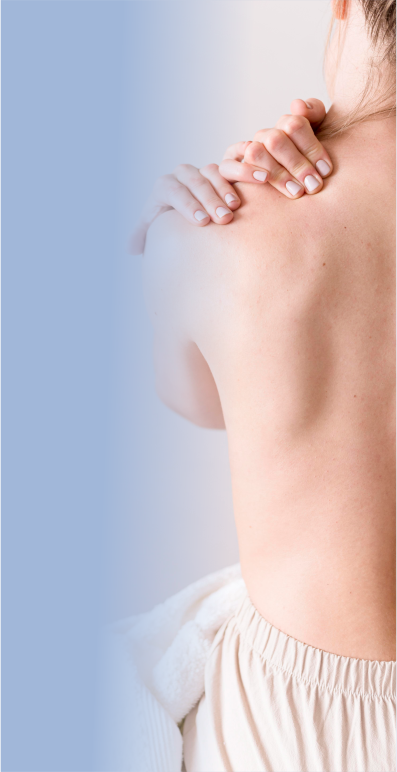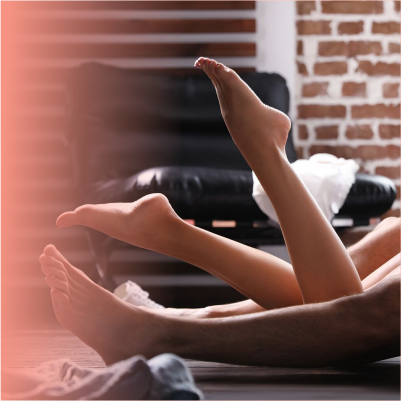Over-the-counter products, medications, and procedures performed by dermatologists, such as microdermabrasion, may help minimize the appearance of acne scars.
Dealing with active breakouts can be incredibly frustrating, and the scars they leave behind only add to the frustration. The silver lining is that acne scars are treatable.
However, before initiating any treatment, it’s essential to eliminate acne altogether since new breakouts can result in fresh acne scars.
It’s worth noting that certain scar treatments cannot be used concurrently with standard acne medications, and the inflammation triggered by breakouts may diminish the effectiveness of treatments.
Jump to Section
Atrophic Acne Scars | Hypertrophic Scars | Alpha Hydroxy Acids | Lactic Acid | Retinoids | Salicylic Acid | Sunscreen | Dermabrasion | Chemical Peels | Laser Resurfacing | Fillers | Microneedling | Injections | Subcision | Conclusion
Atrophic or depressed acne scars
Atrophic or depressed acne scars are one of the most common types of acne scars, characterized by a loss of tissue that creates a depressed or pitted appearance on the skin’s surface. These scars typically occur when there is a loss of collagen during the healing process of acne lesions. There are several effective treatments available to help improve the appearance of atrophic acne scars.
One popular treatment option for atrophic acne scars is dermal fillers. Dermal fillers, such as hyaluronic acid or collagen injections, can help plump up the depressed areas of the skin, making the scars less noticeable. These fillers work by adding volume to the skin, effectively filling in the indentations caused by the scars.
Another treatment option for atrophic acne scars is microneedling. Microneedling, also known as collagen induction therapy, involves the use of tiny needles to create controlled micro-injuries in the skin. This process stimulates the body’s natural collagen production, leading to smoother, more even skin texture over time. Microneedling can also help break up scar tissue and encourage the growth of new, healthy skin cells.
Chemical peels are another popular treatment option for atrophic acne scars. During a chemical peel, a solution containing exfoliating agents, such as alpha hydroxy acids or trichloroacetic acid, is applied to the skin. This solution helps to remove the outer layers of damaged skin, revealing smoother, healthier skin underneath. Chemical peels can help improve the appearance of atrophic acne scars by promoting cell turnover and collagen production.
In addition to these treatments, laser therapy is also an effective option for treating atrophic acne scars. Laser resurfacing treatments, such as fractional laser therapy or ablative laser therapy, work by targeting the deeper layers of the skin, stimulating collagen production and promoting skin regeneration. These treatments can help improve the texture and appearance of atrophic acne scars, leading to smoother, more even-looking skin.
It’s important to note that the effectiveness of these treatments can vary depending on the severity of the acne scars and individual skin types. Consulting with a dermatologist or skincare professional is the best way to determine which treatment option is right for you. Additionally, it’s essential to follow a proper skincare routine and protect your skin from sun exposure to maintain the results of acne scar treatments and prevent future scarring.
Hypertrophic or raised acne scars
Hypertrophic or raised acne scars are another common type of acne scarring that occurs when the body produces too much collagen during the healing process of acne lesions. These scars are characterized by raised, thickened areas of skin that often have a red or pinkish hue. While hypertrophic acne scars are not typically as deep as atrophic scars, they can still be a source of frustration for those affected. Fortunately, there are several treatment options available to help reduce the appearance of hypertrophic acne scars.
One effective treatment for hypertrophic acne scars is corticosteroid injections. During this procedure, a dermatologist injects a corticosteroid medication, such as triamcinolone acetonide, directly into the scar tissue. Corticosteroids work by reducing inflammation and inhibiting the production of collagen, leading to a flattening of the raised scar tissue. Multiple injections may be necessary to achieve optimal results, but many patients experience significant improvement in the appearance of their hypertrophic acne scars after corticosteroid treatment.
Another treatment option for hypertrophic acne scars is silicone gel or sheets. Silicone products have been shown to help soften and flatten raised scar tissue by hydrating the skin and regulating collagen production. Silicone gel can be applied directly to the scarred area, while silicone sheets are worn over the scar for several hours each day. Both forms of silicone therapy can be effective in reducing the size and visibility of hypertrophic acne scars over time.
In addition to corticosteroid injections and silicone therapy, laser therapy is also commonly used to treat hypertrophic acne scars. Laser treatments, such as pulsed dye laser therapy or fractional laser therapy, work by targeting the blood vessels in the scar tissue and breaking down excess collagen. This process helps to flatten the raised areas of the scar and reduce redness and inflammation. Multiple laser sessions may be required to achieve optimal results, but many patients experience significant improvement in the appearance of their hypertrophic acne scars after laser treatment.
It’s important to note that the effectiveness of these treatments can vary depending on the severity of the acne scars and individual skin types. Consulting with a dermatologist or skincare professional is the best way to determine which treatment option is right for you. Additionally, it’s essential to follow a proper skincare routine and protect your skin from sun exposure to maintain the results of acne scar treatments and prevent future scarring.
Alpha hydroxy acids
Alpha hydroxy acids (AHAs) are a group of naturally occurring acids that are commonly used in skincare products to exfoliate the skin and improve its overall appearance. Some of the most well-known AHAs include glycolic acid, lactic acid, citric acid, and mandelic acid. These acids work by loosening the bonds between dead skin cells, allowing them to be sloughed away more easily, revealing smoother, more radiant skin underneath. AHAs are particularly effective at treating acne scars because they can help to promote cell turnover and encourage the growth of new, healthy skin cells.
One of the primary benefits of AHAs for treating acne scars is their ability to exfoliate the skin. By removing dead skin cells from the surface of the skin, AHAs can help to unclog pores and prevent new acne breakouts from forming. This can be especially beneficial for individuals with atrophic acne scars, as it can help to promote the regeneration of healthy skin cells and improve the overall texture and appearance of the skin.
In addition to their exfoliating properties, AHAs also have humectant properties, meaning they can help to attract moisture to the skin and improve hydration levels. This can be particularly beneficial for individuals with hypertrophic acne scars, as it can help to soften and flatten raised scar tissue over time. By hydrating the skin and promoting collagen production, AHAs can help to improve the elasticity and texture of the skin, leading to a smoother, more even complexion.
When using AHAs to treat acne scars, it’s important to start with a lower concentration and gradually increase the strength of the product over time. This can help to minimize the risk of irritation and ensure that your skin adjusts to the treatment effectively. It’s also important to use sunscreen daily when using AHAs, as they can increase the skin’s sensitivity to the sun and make it more prone to sun damage.
Overall, AHAs are a highly effective treatment option for acne scars, thanks to their exfoliating and hydrating properties. By incorporating AHAs into your skincare routine, you can help to improve the texture and appearance of your skin, reduce the visibility of acne scars, and achieve a smoother, more radiant complexion.
Lactic acid
Lactic acid is a type of alpha hydroxy acid (AHA) that is naturally derived from milk and other dairy products. It is widely used in skincare products for its exfoliating and hydrating properties, making it an effective treatment for various skin concerns, including acne scars.
One of the primary benefits of lactic acid for treating acne scars is its ability to gently exfoliate the skin. Lactic acid works by breaking down the bonds between dead skin cells, allowing them to be sloughed away more easily. This helps to unclog pores, remove surface impurities, and promote cell turnover, leading to a smoother, more even complexion. By removing dead skin cells from the surface of the skin, lactic acid can also help to fade pigmentation and discoloration associated with acne scars, resulting in a more uniform skin tone.
In addition to its exfoliating properties, lactic acid also has humectant properties, meaning it can attract moisture to the skin and help to improve hydration levels. This is particularly beneficial for individuals with acne scars, as hydrated skin is better able to heal and regenerate. By increasing the skin’s moisture content, lactic acid can help to soften and smooth the appearance of acne scars, making them less noticeable over time.
Another benefit of lactic acid is its gentle nature, making it suitable for all skin types, including sensitive skin. Unlike some other AHAs, such as glycolic acid, lactic acid has larger molecules, which penetrate the skin more slowly and cause less irritation. This makes it an ideal choice for individuals with sensitive or easily irritated skin who still want to reap the benefits of exfoliation and skin renewal.
When incorporating lactic acid into your skincare routine to treat acne scars, it’s important to start with a lower concentration and gradually increase the strength of the product as your skin adjusts. This can help to minimize the risk of irritation and ensure that you achieve the desired results without compromising the health of your skin. It’s also essential to use sunscreen daily when using lactic acid products, as they can increase the skin’s sensitivity to the sun and make it more prone to sun damage.
Overall, lactic acid is a highly effective treatment for acne scars, thanks to its exfoliating, hydrating, and gentle nature. By incorporating lactic acid into your skincare routine, you can help to improve the texture and appearance of your skin, fade pigmentation and discoloration, and achieve a smoother, more radiant complexion.
Retinoids
Retinoids are a class of compounds derived from vitamin A that are widely used in skincare products for their ability to promote cell turnover, stimulate collagen production, and improve the overall texture and appearance of the skin. These powerful ingredients are highly effective at treating various skin concerns, including acne scars.
One of the primary benefits of retinoids for treating acne scars is their ability to increase cell turnover. Retinoids work by speeding up the natural exfoliation process, helping to slough away dead skin cells more quickly and effectively. This promotes the regeneration of new, healthy skin cells, leading to a smoother, more even complexion. By encouraging the turnover of skin cells, retinoids can also help to fade pigmentation and discoloration associated with acne scars, resulting in a more uniform skin tone.
In addition to their exfoliating properties, retinoids also stimulate collagen production in the skin. Collagen is a protein that helps to support the structure of the skin and keep it firm and plump. As we age, collagen production naturally declines, leading to the formation of wrinkles, fine lines, and other signs of aging. By stimulating collagen production, retinoids can help to improve the elasticity and texture of the skin, reducing the appearance of acne scars and other imperfections.
Another benefit of retinoids is their ability to regulate sebum production in the skin. Excess oil production can contribute to the development of acne and acne scars by clogging pores and promoting inflammation. Retinoids help to normalize oil production, keeping pores clear and reducing the risk of new breakouts. By addressing the underlying cause of acne, retinoids can help to prevent the formation of new scars and minimize the appearance of existing ones.
It’s important to note that retinoids can be harsh on the skin, especially when first starting treatment. Common side effects include redness, dryness, and irritation, which can be particularly challenging for individuals with sensitive or easily irritated skin. To minimize these side effects, it’s essential to start with a lower concentration of retinoids and gradually increase the strength of the product as your skin adjusts. It’s also important to use retinoids as directed and to follow up with a moisturizer to help hydrate the skin and reduce irritation.
Overall, retinoids are a highly effective treatment for acne scars, thanks to their ability to promote cell turnover, stimulate collagen production, and regulate sebum production in the skin. By incorporating retinoids into your skincare routine, you can help to improve the texture and appearance of your skin, fade pigmentation and discoloration, and achieve a smoother, more radiant complexion.
Salicylic acid
Salicylic acid is a beta hydroxy acid (BHA) that is widely used in skincare products for its ability to exfoliate the skin, unclog pores, and reduce inflammation. It is particularly effective at treating acne scars, as well as preventing new breakouts from forming.
One of the primary benefits of salicylic acid for treating acne scars is its ability to exfoliate the skin. Salicylic acid works by penetrating deep into the pores and dissolving the “glue” that holds dead skin cells together. This helps to unclog pores and remove built-up debris, which can contribute to the formation of acne scars. By promoting the shedding of dead skin cells, salicylic acid helps to reveal smoother, more even skin underneath, reducing the visibility of acne scars over time.
In addition to its exfoliating properties, salicylic acid also has anti-inflammatory properties, making it effective at reducing redness and swelling associated with acne scars. This can help to minimize the appearance of scars and promote faster healing of the skin. By reducing inflammation, salicylic acid can also help to prevent new breakouts from forming, further reducing the risk of additional scarring.
Another benefit of salicylic acid is its ability to regulate oil production in the skin. Excess oil production can contribute to the development of acne and acne scars by clogging pores and promoting inflammation. Salicylic acid helps to dissolve excess oil and unclog pores, keeping the skin clear and preventing new breakouts from forming. By addressing the underlying cause of acne, salicylic acid can help to reduce the risk of new scars and improve the overall appearance of the skin.
When incorporating salicylic acid into your skincare routine to treat acne scars, it’s important to start with a lower concentration and gradually increase the strength of the product as your skin adjusts. This can help to minimize the risk of irritation and ensure that you achieve the desired results without compromising the health of your skin. It’s also essential to use sunscreen daily when using salicylic acid products, as they can increase the skin’s sensitivity to the sun and make it more prone to sun damage.
Overall, salicylic acid is a highly effective treatment for acne scars, thanks to its exfoliating, anti-inflammatory, and oil-regulating properties. By incorporating salicylic acid into your skincare routine, you can help to improve the texture and appearance of your skin, reduce the visibility of acne scars, and achieve a smoother, more radiant complexion.
Sunscreen
Sunscreen is not just a skincare product; it’s a crucial component in any skincare routine, especially when treating acne scars. While it might not directly treat scars, it plays a vital role in preventing them from worsening and in aiding the skin’s natural healing process.
First and foremost, sunscreen protects the skin from the harmful effects of ultraviolet (UV) radiation from the sun. UV radiation can exacerbate the appearance of acne scars by causing them to darken and become more pronounced. By applying sunscreen daily, you create a barrier that shields your skin from these damaging rays, allowing it to heal properly without interference.
Moreover, sunscreen helps to prevent post-inflammatory hyperpigmentation (PIH), a common issue that occurs when areas of the skin darken after inflammation or injury, such as acne. Acne scars are particularly susceptible to PIH, and UV exposure can intensify this darkening effect. By wearing sunscreen consistently, you minimize the risk of PIH and ensure that your acne scars fade evenly over time.
Furthermore, sunscreen plays a crucial role in maintaining the results of other acne scar treatments. Many treatments, such as retinoids, AHAs, and BHAs, can increase the skin’s sensitivity to sunlight. Without proper sun protection, UV exposure can negate the benefits of these treatments and even cause further damage to the skin. By wearing sunscreen daily, you protect your skin from UV-induced inflammation and premature aging, allowing your acne scar treatments to work more effectively.
When selecting a sunscreen for acne-prone skin, opt for a non-comedogenic, oil-free formula that won’t clog pores or exacerbate breakouts. Look for sunscreens labeled as “broad-spectrum,” meaning they protect against both UVA and UVB rays. Additionally, choose a sunscreen with an SPF (sun protection factor) of 30 or higher for adequate protection.
Incorporating sunscreen into your daily skincare routine is essential for maintaining the health and appearance of your skin, particularly when treating acne scars. By protecting your skin from UV damage, you minimize the risk of exacerbating existing scars and ensure that your skin heals properly. So, remember to apply sunscreen every morning, regardless of the weather or your plans for the day, to safeguard your skin and promote optimal healing.
Dermabrasion
Dermabrasion is a cosmetic procedure used to improve the texture and appearance of the skin, including the treatment of acne scars. It involves the use of a specialized instrument, typically a high-speed rotary device with an abrasive attachment, to gently sand away the outer layer of the skin. This process removes damaged or uneven skin cells, stimulating the growth of new, healthy skin cells and promoting a smoother, more even complexion.
One of the primary benefits of dermabrasion for treating acne scars is its ability to effectively resurface the skin. By removing the top layer of damaged skin, dermabrasion can help to reduce the visibility of acne scars, including both atrophic and hypertrophic scars. This process also helps to promote collagen production in the deeper layers of the skin, which can further improve the appearance of scars over time.
Dermabrasion is particularly effective for treating shallow or superficial acne scars, such as those caused by mild to moderate acne. It can help to smooth out rough or uneven skin texture, reduce the appearance of pitted or depressed scars, and fade pigmentation and discoloration associated with acne scarring. However, it may not be as effective for treating deeper or more severe scars, such as ice pick scars, which may require additional treatment modalities.
One of the advantages of dermabrasion is that it can be customized to meet the specific needs and preferences of each patient. The depth and intensity of the treatment can be adjusted based on the severity of the acne scars and the desired outcome. For example, a more aggressive dermabrasion treatment may be recommended for deeper scars, while a gentler approach may be suitable for more superficial scars.
While dermabrasion can produce dramatic improvements in the appearance of acne scars, it’s essential to keep in mind that it is a surgical procedure and may require some downtime for recovery. Patients may experience redness, swelling, and sensitivity in the treated area immediately following the procedure, and it may take several weeks for the skin to fully heal. However, most patients find that the results of dermabrasion are well worth the temporary inconvenience, as they can enjoy smoother, more radiant skin with significantly reduced acne scarring.
Overall, dermabrasion is a highly effective treatment option for improving the appearance of acne scars. By removing damaged skin cells and stimulating collagen production, dermabrasion can help to smooth out skin texture, reduce the visibility of scars, and restore a more youthful, even complexion. If you’re considering dermabrasion for acne scar treatment, be sure to consult with a qualified dermatologist or skincare professional to determine if it’s the right option for you and to discuss your treatment goals and expectations.
Chemical peels
Chemical peels are a popular cosmetic treatment used to improve the appearance and texture of the skin, including the treatment of acne scars. They involve the application of a chemical solution to the skin, which causes the outer layers of damaged or uneven skin cells to peel away, revealing smoother, healthier skin underneath. Chemical peels are highly effective at treating a variety of acne scars, including atrophic, hypertrophic, and pigmented scars.
One of the primary benefits of chemical peels for treating acne scars is their ability to promote exfoliation and skin renewal. The chemical solution used in the peel works to break down the bonds between dead skin cells, allowing them to be sloughed away more easily. This process helps to smooth out rough or uneven skin texture, reduce the appearance of pitted or depressed scars, and fade pigmentation and discoloration associated with acne scarring. By promoting the growth of new, healthy skin cells, chemical peels can help to improve the overall tone and texture of the skin, leading to a more youthful, radiant complexion.
Chemical peels can be customized to meet the specific needs and preferences of each patient. The strength and type of chemical solution used in the peel can be adjusted based on the severity of the acne scars and the desired outcome. For example, superficial peels, such as those containing alpha hydroxy acids (AHAs) or beta hydroxy acids (BHAs), are typically used to treat mild to moderate acne scars and require minimal downtime for recovery. Medium to deep peels, such as those containing trichloroacetic acid (TCA) or phenol, are more aggressive and may produce more dramatic results but may require more downtime for recovery.
One of the advantages of chemical peels is that they can be performed as standalone treatments or combined with other acne scar treatments for enhanced results. For example, combining a chemical peel with microneedling or laser therapy can help to further improve the appearance of acne scars and enhance collagen production in the skin. Additionally, chemical peels can be performed on various areas of the body, including the face, neck, chest, and hands, making them a versatile treatment option for addressing acne scars in different areas.
While chemical peels can produce significant improvements in the appearance of acne scars, it’s essential to keep in mind that they are a medical procedure and may carry some risks, including redness, swelling, irritation, and pigmentation changes. It’s crucial to consult with a qualified dermatologist or skincare professional to determine if chemical peels are the right option for you and to discuss your treatment goals and expectations. With proper care and follow-up, chemical peels can help to achieve smoother, more even skin and reduce the visibility of acne scars, leading to a more confident and radiant appearance.
Laser resurfacing
Laser resurfacing is a highly effective cosmetic procedure used to improve the texture and appearance of the skin, including the treatment of acne scars. It works by using concentrated beams of light to remove the outer layers of damaged skin cells, stimulating collagen production, and promoting the growth of new, healthy skin cells. Laser resurfacing is particularly effective at treating a wide range of acne scars, including atrophic, hypertrophic, and pigmented scars.
One of the primary benefits of laser resurfacing for acne scars is its ability to precisely target and treat specific areas of scarring. Different types of lasers can be used to address different types of acne scars and skin concerns. For example, fractional laser therapy works by delivering thousands of tiny, controlled laser beams to the skin, creating microscopic channels that stimulate collagen production and promote skin regeneration. This process helps to smooth out rough or uneven skin texture, reduce the appearance of pitted or depressed scars, and fade pigmentation and discoloration associated with acne scarring.
Another benefit of laser resurfacing is its ability to penetrate the deeper layers of the skin, reaching areas that traditional topical treatments may not be able to reach. This allows for more comprehensive treatment of acne scars and can lead to more significant improvements in the overall texture and appearance of the skin. Additionally, laser resurfacing can be customized to meet the specific needs and preferences of each patient, with different laser settings and treatment depths tailored to achieve optimal results.
Laser resurfacing is a minimally invasive procedure that typically requires minimal downtime for recovery. Most patients experience mild redness, swelling, and discomfort immediately following the procedure, but these side effects usually resolve within a few days to a week. Some patients may also experience temporary changes in pigmentation or texture, but these typically fade over time as the skin heals.
While laser resurfacing can produce significant improvements in the appearance of acne scars, it’s essential to keep in mind that it is a medical procedure and may carry some risks, including infection, scarring, and changes in pigmentation. It’s crucial to consult with a qualified dermatologist or skincare professional to determine if laser resurfacing is the right option for you and to discuss your treatment goals and expectations. With proper care and follow-up, laser resurfacing can help to achieve smoother, more even skin and reduce the visibility of acne scars, leading to a more confident and radiant appearance.
Fillers
Fillers are a non-invasive cosmetic treatment commonly used to improve the appearance of acne scars. They work by injecting a gel-like substance, typically composed of hyaluronic acid or collagen, into the skin to fill in depressions or indentations caused by atrophic acne scars. Fillers can help to smooth out the surface of the skin, making acne scars less noticeable and improving overall skin texture.
One of the primary benefits of fillers for treating acne scars is their ability to provide immediate results with minimal downtime. Unlike some other acne scar treatments, which may require multiple sessions and weeks or months to see noticeable improvements, fillers can produce immediate smoothing and plumping of the skin. This can be particularly beneficial for individuals looking for a quick and effective solution to improve the appearance of their acne scars.
Fillers can be customized to meet the specific needs and preferences of each patient. Different types of fillers have different properties and consistencies, allowing for tailored treatment based on the type and severity of the acne scars being addressed. For example, thicker fillers may be used to fill in deeper scars, while thinner fillers may be used for more superficial scars. Additionally, fillers can be injected at varying depths in the skin, allowing for precise targeting of specific areas of scarring.
Another benefit of fillers is their versatility in treating different types of acne scars. They can be used to fill in pitted or depressed scars, smooth out rough or uneven skin texture, and even improve the appearance of rolling or boxcar scars. By filling in the depressions caused by acne scars, fillers help to restore volume and contour to the skin, creating a smoother, more even surface.
While fillers can produce immediate improvements in the appearance of acne scars, it’s important to keep in mind that they are not permanent solutions. Depending on the type of filler used, results typically last anywhere from several months to a few years before additional injections are needed to maintain the desired outcome. However, with proper care and maintenance, fillers can provide long-lasting improvements in the appearance of acne scars, helping individuals feel more confident and comfortable in their skin.
It’s essential to consult with a qualified dermatologist or skincare professional to determine if fillers are the right option for treating your acne scars. They can assess your skin type and the severity of your scars, recommend the most appropriate type of filler, and create a customized treatment plan to help you achieve your desired results. With the help of fillers, you can smooth out the surface of your skin, reduce the visibility of acne scars, and enjoy a more even and radiant complexion.
Microneedling
Microneedling, also known as collagen induction therapy, is a minimally invasive cosmetic procedure used to improve the texture and appearance of the skin, including the treatment of acne scars. It involves the use of a device equipped with fine needles that create controlled micro-injuries in the skin’s surface. These micro-injuries stimulate the body’s natural wound healing process, leading to increased collagen production, skin regeneration, and ultimately, smoother, more even skin texture.
One of the primary benefits of microneedling for treating acne scars is its ability to stimulate collagen production in the skin. Collagen is a protein that helps to support the structure of the skin and keep it firm and plump. Acne scars are often the result of a loss of collagen during the healing process of acne lesions. By creating controlled micro-injuries in the skin, microneedling triggers the production of new collagen, which helps to fill in depressions or indentations caused by atrophic acne scars and improve overall skin texture.
Microneedling is particularly effective at treating atrophic acne scars, including rolling and boxcar scars. The micro-injuries created by the needles stimulate the production of new collagen and elastin fibers, which help to plump up the skin and fill in the indentations caused by the scars. Over time, this process leads to smoother, more even skin texture and a reduction in the visibility of acne scars.
Another benefit of microneedling is its ability to improve the absorption of topical skincare products. The micro-channels created in the skin during the microneedling process allow for better penetration of serums, creams, and other skincare products, maximizing their effectiveness in treating acne scars and promoting skin regeneration. This can enhance the overall results of microneedling and help to further improve the appearance of acne scars over time.
Microneedling is a safe and well-tolerated procedure that typically requires minimal downtime for recovery. Most patients experience mild redness and swelling immediately following the treatment, which usually subsides within a few days. Some patients may also experience minor pinpoint bleeding or bruising at the treatment sites, but these side effects are temporary and typically resolve on their own.
While microneedling can produce significant improvements in the appearance of acne scars, it often requires multiple treatment sessions spaced several weeks apart to achieve optimal results. The number of sessions needed depends on the severity of the acne scars and individual skin type. It’s essential to consult with a qualified dermatologist or skincare professional to determine if microneedling is the right option for you and to create a customized treatment plan tailored to your specific needs and goals. With proper care and follow-up, microneedling can help to smooth out the surface of your skin, reduce the visibility of acne scars, and restore a more even and radiant complexion.
Injections
Injections are a common treatment option for certain types of acne scars, particularly depressed or atrophic scars. There are various types of injections used to treat acne scars, each with its own mechanism of action and benefits.
- Hyaluronic Acid Fillers: Hyaluronic acid fillers, such as Restylane or Juvederm, are commonly used to fill in depressed acne scars. These fillers work by adding volume to the skin, effectively lifting the depressed areas and making the scars less noticeable. The results of hyaluronic acid fillers are immediate and can last anywhere from several months to over a year, depending on the type of filler used.
- Corticosteroid Injections: Corticosteroid injections, such as triamcinolone acetonide, are often used to treat hypertrophic or keloid acne scars. These injections work by reducing inflammation and inhibiting the production of collagen, which helps to flatten raised scar tissue. Corticosteroid injections can provide significant improvement in the appearance of hypertrophic scars, although multiple injections may be necessary to achieve optimal results.
- Platelet-Rich Plasma (PRP) Injections: PRP injections involve extracting a small amount of the patient’s own blood, processing it to isolate platelet-rich plasma, and then injecting it back into the skin. PRP contains growth factors and other bioactive proteins that can stimulate collagen production and promote tissue regeneration. PRP injections can be effective for improving the appearance of acne scars and can also enhance the results of other acne scar treatments, such as laser therapy or microneedling.
- Steroid Injections: Steroid injections are sometimes used to treat inflamed acne lesions or cysts, which can help to prevent the formation of new scars. These injections work by reducing inflammation and swelling in the affected area, allowing the acne lesion to heal more quickly and with less scarring. Steroid injections are typically reserved for severe or cystic acne that does not respond to other treatments.
Injections are generally considered safe and effective treatments for acne scars when performed by a qualified healthcare professional. However, it’s essential to discuss the risks and benefits of each type of injection with your dermatologist or skincare provider before undergoing treatment. Depending on the type and severity of your acne scars, they can recommend the most appropriate injection option and create a customized treatment plan to help you achieve your desired results.
Subcision
Subcision is a minimally invasive surgical procedure used to treat rolling or boxcar acne scars, which are characterized by depressions or indentations in the skin. It works by breaking up the fibrous bands of scar tissue that tether the skin down, allowing the depressed areas to lift and become more even with the surrounding skin.
During a subcision procedure, a dermatologist or skincare professional will first numb the treatment area with a local anesthetic. Then, a small needle or blade is inserted into the skin, and gentle upward pressure is applied to break up the fibrous bands of scar tissue. This process creates space underneath the scar, allowing blood to pool and form a clot. The clot helps to lift the depressed area of the scar and stimulate the production of collagen, which further improves the appearance of the skin over time.
One of the primary benefits of subcision for treating acne scars is its ability to provide immediate improvement in the appearance of depressed scars. Unlike some other acne scar treatments, which may require multiple sessions and weeks or months to see noticeable improvements, subcision can produce immediate lifting and smoothing of the skin. This can be particularly gratifying for individuals looking for quick results to improve the texture and appearance of their skin.
Another benefit of subcision is its long-lasting results. While some acne scar treatments may require ongoing maintenance or additional sessions to maintain the desired outcome, subcision can provide lasting improvement in the appearance of acne scars. By breaking up the fibrous bands of scar tissue and stimulating collagen production, subcision helps to permanently lift and smooth out depressed scars, leading to a more even and radiant complexion.
Subcision is a safe and well-tolerated procedure that typically requires minimal downtime for recovery. Most patients experience mild bruising, swelling, and discomfort immediately following the procedure, but these side effects usually resolve within a few days. Some patients may also experience minor pinpoint bleeding or temporary changes in pigmentation, but these are rare and typically fade over time as the skin heals.
Overall, subcision is an effective treatment option for rolling or boxcar acne scars, providing immediate lifting and smoothing of the skin with long-lasting results. It’s essential to consult with a qualified dermatologist or skincare professional to determine if subcision is the right option for you and to discuss your treatment goals and expectations. With proper care and follow-up, subcision can help to smooth out the surface of your skin, reduce the visibility of acne scars, and restore a more even and radiant complexion.
The bottom line
In summary, acne scars can be a source of frustration, but there are numerous treatments available to minimize their appearance. While most scars are permanent, consulting with a healthcare professional can assist in finding the most suitable treatment for reducing their visibility.
Prevention is key when it comes to treating acne scars. Minimizing breakouts reduces the likelihood of developing scars. It’s crucial to refrain from picking, popping, or squeezing breakouts, as this can irritate the skin and cause damage to the underlying tissue, ultimately leading to scars.
Jump to Section
Atrophic Acne Scars | Hypertrophic Scars | Alpha Hydroxy Acids | Lactic Acid | Retinoids | Salicylic Acid | Sunscreen | Dermabrasion | Chemical Peels | Laser Resurfacing | Fillers | Microneedling | Injections | Subcision | Conclusion







